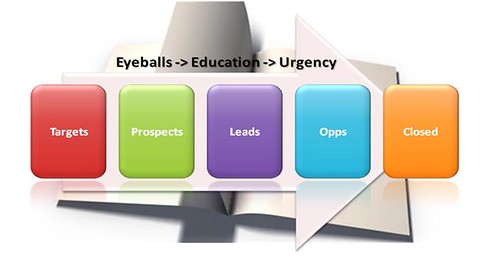The Food network is a great example of this. Cooking may not be the hardest task but it does take some practice and it can be quite intimidating to a novice. Even the most difficult dishes however are made to look very easy to prepare if you ever watch the Food network. I suppose that when you're an Iron Chef you can make anything look as easy as making a grilled cheese sandwich.
Often times I get asked by both coworkers and friends "what exactly do you do?" I tell them that I am a product marketing manager, which inevitably leads to more questions about what product marketing is exactly. So a personal challenge I've undertaken is an attempt to create a simple explanation for what it is that product marketing does. By doing so perhaps I've taken a few baby steps towards becoming an Iron Chef of marketing if you will. I needed the explanation to be more than a job description and also more interesting than a list of the deliverables I get from my boss.
So I've come up with a simple analogy - I write the story that helps to fill the sales funnel. It's the story that, if written well, serves to both find prospects as well as helps those prospects convert to opportunities and sales.

When I was in elementary school I learned in English class that a good story goes through 3 phases: Introduction, Plot, and Conclusion.
In the marketing story I write I think of theses stages in terms of the desired outcomes for the content I create to support my narrative. So I have 3 outcomes or phases for my story as well: Eyeballs, Education, and Urgency.
- Eyeballs: The key to the beginning of the story is customer segmentation. The messaging and value of the solution needs to resonate with the "Tribe" (to borrow a term from Seth Godin) that best fits the user and buyer profile of my product. By fine tuning the story from the beginning to appeal to a particular audience that helps both to get eyeballs reading the story, while also ensuring I target the audience that is most likely to be converted through to opportunities.
- Education: This is the easiest part of the story to write. It can consist of product brochures and flyers, product websites, demos, and other types of collateral that educate the eyeballs I've captured as to what it is exactly that the product does, and the value or outcomes that will result. Again if done well more conversion and more movement down the sales funnel.
- Urgency: I find this the most difficult part of the story to write, as it requires the most depth of knowledge. Customer success stories, tools to help determine ROI or tools to quantify risk, vendor neutral educational content along with the expertise that I've enable my colleagues in sales with can be the key chapters of the story that drive real opportunities. This is when the story helps a reader understand how their world could be a better place. It tells them how others have benefitted from my solution and whenever possible ties this back to an economic impact. Put another way, this is when the story can really help close the gap between awareness and engagement.
So that's the explanation I'm going with the next time I get asked "what do you do?"
I'm going to make myself a grilled cheese sandwich now…